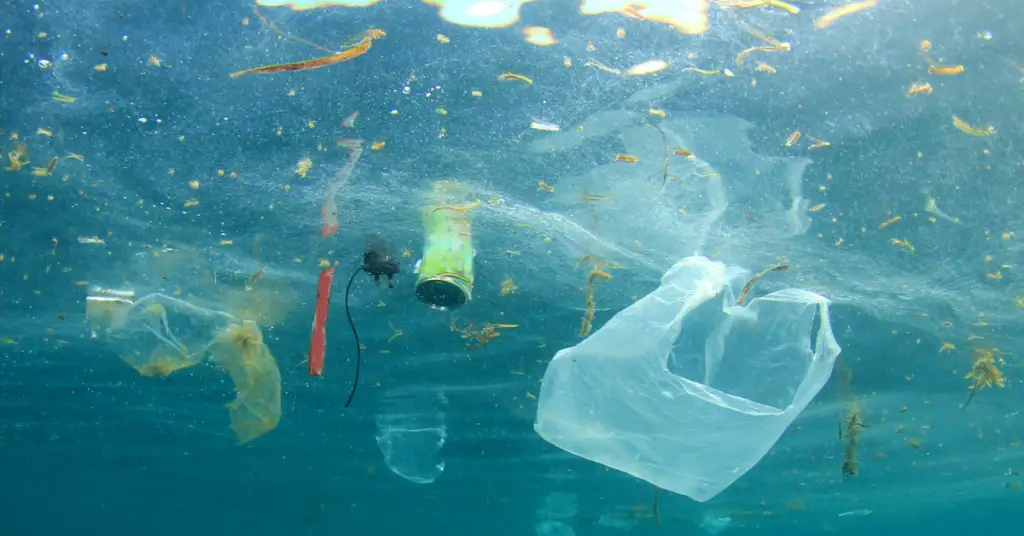Climate change is causing sea-level rise and increased seawater temperatures, with broad implications for marine ecology and people living in coastal areas. Like rainforests, the world’s oceans have historically provided a relatively stable environment in which marine organisms have evolved.
While this stability promotes species diversity, it also makes marine species more vulnerable to environmental change. In fact, a recent study found that cold-blooded marine species are twice as vulnerable to the impacts of warmer oceans than their terrestrial counterparts. In addition to storm surge impacts and ocean warming (leading to sea level rise and ocean deoxygenation), marine organisms also face ocean acidification.
These threats are likely to have impacts similar to those faced by terrestrial and freshwater ecosystems, including flow adjustments, biotic friction and uncoupling, or major interactions.
Ocean Acidification
As noted above, human activities release huge amounts of CO2 into the atmosphere every day. Although forests and other plant communities receive particular attention for CO2 sequestration, the world’s oceans also play a key role in controlling the Earth’s carbon budget.
In fact, the world’s oceans absorb about 20-25% of our current CO2 emissions. Now, with more atmospheric CO2 available, the oceans absorb more carbon, which dissolves in seawater as carbonic acid. Although this absorption may slow climate change, it also increases the acidity (eg. lowering pH levels) of the world’s oceans.
This process, known as ocean acidification, has several consequences that can directly and indirectly kill marine organisms. For example, it inhibits the ability of coral animals to deposit the calcium, used to build their reefs’ structure and prevents molluscs from accumulating adequate amounts of calcium carbonate to develop shells strong enough to survive.
Ocean acidification also disturbs predator-prey dynamics by impairing the senses of prey species and compromising the ability of sea creatures to communicate with their fellow-creatures.
Sea level rise
Over the past 30 to 40 years, surface ocean temperatures have warmed by approximately 0.64°C. Warming oceans have several implications, the best known being sea-level rise caused by thermal expansion of ocean water combined with water released by melting glaciers and polar ice caps.
Current forecasts suggest that sea levels in sub-Saharan Africa will rise by 0.2 to 1.15 m over the next 100 years, relative to 2005 levels. As the oceans infiltrate the land, the extent of low-lying coastal ecosystems such as rocky shores or sandy beaches will decrease, as will the size of wildlife populations living in these areas.
The extinction of the Australian Bramble Cay melomys (Melomys rubicola, EX): the world’s first documented mammalian extinction caused by anthropogenic climate change—has been attributed to sea level rise.
Coral bleaching
The incredible diversity of coral ecosystems is attributable to the relative stability of the tropical oceans. Because of this stability, individual coral species have adapted to very specialized niches. Many corals therefore only tolerate narrow ranges of temperature, sunlight, water opacity, and nutrient load.
Climate change upsets this stability, modifying the temperature (warming of the oceans), the depth (see elevation), sediment and nutrient loads (increased erosion and runoff) from the environments in which corals live. These changes lead to a breakdown of critical mutualistic relationships between photosynthetic algae and corals.
In the process, the corals also lose their vivid colors, revealing the ghostly white coral skeletons, hence the name coral bleaching. This breakdown in the relationship deprives the corals of the essential carbohydrates they obtain from the algae, causing corals to starve if stressful conditions persist for an extended period.
Africa’s tropical oceans have experienced extensive coral bleaching events in recent years. For example, parts of Tanzania and Kenya have seen over 80% of their corals affected.
Coral bleaching also affects other species associated with coral reefs. For example, in the Seychelles, where coral bleaching has been observed in 70-99% of coral reefs, butterfly fish exhibited a breakdown in territorial behavior, making it hard for them to breed and feed.
In Zanzibar and Tanzania, eroded fish communities showed little signs of recovery multiple years after a bleaching event.
Ocean Deoxygenation
Marine fish and invertebrates depend on dissolved oxygen entering the water via the atmosphere or photosynthetic plankton. But because warmer water absorbs less oxygen, scientists predict that certain areas of the ocean will see a 3-6% drop in dissolved oxygen concentrations as a result of climate change.
This process, called oceanic suffocation or oceanic deoxygenation, will leave parts of the ocean unsuitable for fish and marine invertebrates. The impact of ocean deoxygenation will also be felt by economically important fisheries, notably in West Africa where climate change is projected to cause fisheries-related economic losses of up to US$311 million per year.

Erzsebet Frey (Eli Frey) is an ecologist and online entrepreneur with a Master of Science in Ecology from the University of Belgrade. Originally from Serbia, she has lived in Sri Lanka since 2017. Eli has worked internationally in countries like Oman, Brazil, Germany, and Sri Lanka. In 2018, she expanded into SEO and blogging, completing courses from UC Davis and Edinburgh. Eli has founded multiple websites focused on biology, ecology, environmental science, sustainable and simple living, and outdoor activities. She enjoys creating nature and simple living videos on YouTube and participates in speleology, diving, and hiking.

